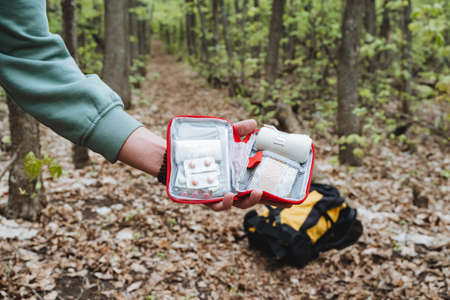1. Understanding the Concept of First Aid in Indian Context
First aid in India is a unique blend of traditional wisdom and modern medical knowledge. For generations, Indian families have relied on home remedies using ingredients like turmeric, honey, tulsi (holy basil), and neem leaves to treat minor injuries and ailments. This local knowledge is often passed down through families and communities, forming a vital part of daily life. However, as urbanization increases and access to healthcare improves, modern first aid practices—such as using antiseptics, sterile bandages, and pain relievers—are becoming more common. Despite this progress, many people still turn to traditional methods first before seeking professional help. Understanding first aid in the Indian context means recognizing the value of both approaches. Emphasizing a balanced use of time-tested home remedies alongside contemporary first aid kits can empower individuals to respond effectively to emergencies while respecting cultural practices. This integration not only strengthens community resilience but also ensures that the benefits of both worlds are available when accidents occur.
Significance of First Aid Kits in Daily Life
In India, where daily life is shaped by vibrant diversity—from crowded metros like Mumbai and Delhi to remote villages and rural schools—the importance of having a well-stocked first aid kit cannot be overstated. Accidents can occur unexpectedly at home, in schools, or at workplaces due to various factors such as heavy traffic, festival celebrations, monsoon-related incidents, and construction activities. A first aid kit acts as the first line of defense during medical emergencies and can help stabilize a situation until professional help arrives.
Why Every Indian Home Needs a First Aid Kit
Many Indian households include elders, children, and domestic helpers who are vulnerable to minor injuries, burns, or sudden illnesses. Quick access to basic medical supplies helps manage these situations effectively, reducing panic and preventing complications.
Role of First Aid Kits in Schools
Indian schools are bustling environments where children engage in physical education, outdoor games, and cultural events. Minor cuts, falls, or allergic reactions are common. Teachers and staff equipped with first aid kits can immediately tend to these incidents, ensuring student safety and parental peace of mind.
Workplaces: Diverse Hazards Across India
From IT offices in Bengaluru to textile factories in Surat and agricultural fields in Punjab, workplaces across India present unique safety challenges. Keeping a first aid kit accessible ensures that employees receive prompt care for minor injuries, creating a safer work culture and fulfilling legal requirements under the Factories Act.
Where Should First Aid Kits Be Placed?
| Location | Common Risks | Suggested Placement |
|---|---|---|
| Home | Burns (cooking), falls, insect bites | Kitchen, near bathroom, main hallway |
| School | Cuts (sports), allergies, nosebleeds | Staff room, gymnasium, principal’s office |
| Workplace | Chemical exposure, machinery accidents | Main office area, factory floor, security post |
Culturally Relevant Tip:
In many Indian homes and institutions, using traditional remedies is common. However, it is important to combine these practices with modern first aid essentials like antiseptics and bandages for better outcomes.
![]()
3. Current Awareness Levels and Challenges in Indian Society
First aid kit awareness in India varies significantly between rural, urban, and semi-urban communities. In urban areas, there is a higher level of knowledge about first aid kits due to better access to education and healthcare facilities. However, misconceptions remain, such as the belief that only hospitals or trained professionals need these kits at home or work. Many urban households still do not prioritise keeping a well-stocked first aid kit, often due to busy lifestyles or lack of perceived necessity.
In contrast, rural communities face more significant challenges. Limited access to information, lower literacy rates, and economic constraints all contribute to low awareness about the importance of first aid kits. Many people rely on traditional remedies or delay seeking help until a situation becomes critical. There is also a common misconception that first aid is too complex or expensive for everyday people to manage. This results in very few homes or even schools maintaining proper first aid supplies.
Semi-urban areas fall somewhere in between, with increasing but inconsistent awareness levels. Here, some families might keep basic items like bandages or antiseptics but may not understand what constitutes a complete and effective first aid kit. Cultural beliefs can also influence attitudes, with some people viewing first aid as unnecessary unless directed by a doctor.
The main barriers to adoption across all regions include lack of awareness about what should be included in a first aid kit, limited training opportunities in basic first aid practices, affordability concerns, and cultural perceptions that undervalue preparedness. To bridge these gaps, it is essential to address both educational and economic factors, ensuring that people from all backgrounds understand the life-saving potential of having a readily available first aid kit.
4. Eco-Friendly and Culturally Relevant First Aid Kit Essentials
When building a first aid kit for Indian households, it is important to consider both environmental impact and local cultural practices. Traditional plastic-based products can create unnecessary waste. Instead, families can opt for eco-friendly alternatives that are also accessible in local markets. Using natural remedies and reusable materials not only reduces the carbon footprint but also respects India’s rich heritage of Ayurveda and home-based healing.
Eco-Friendly First Aid Essentials
| Item | Eco-Friendly Alternative | Local Source/Use |
|---|---|---|
| Cotton Bandages | Organic cotton or muslin cloth strips | Easily available at local markets; washable and reusable |
| Antiseptic Solution | Tulsi (Holy Basil) or Neem leaf extract | Traditional disinfectant properties; found in many Indian gardens |
| Pain Relief Balm | Homemade balm with coconut oil and camphor | Commonly used in South India; ingredients from local stores |
| Thermometer Case | Bamboo or wooden case | Sourced from handicraft markets; biodegradable material |
| Cleansing Wipes | Reusable soft cotton wipes with herbal water (rose, aloe vera) | Natural, gentle on skin, and easily washed for reuse |
Culturally Relevant Additions
In many Indian homes, certain items are valued for their healing properties. For example, turmeric powder is widely used to stop minor bleeding and promote healing due to its antibacterial qualities. Clove oil is another staple, especially for toothache relief. Including these in a first aid kit not only offers practical benefits but also connects families to trusted traditions.
Sustainable Practices for First Aid Kits
- Use glass bottles instead of plastic for storing homemade antiseptics or oils.
- Choose locally woven pouches to store kit items rather than synthetic boxes.
- Encourage refilling and reusing containers instead of disposing after single use.
Promoting Awareness and Education
By highlighting eco-friendly and culturally relevant options, awareness campaigns can encourage communities to build sustainable first aid kits. This approach not only protects health but also supports local artisans and traditional knowledge systems, fostering a greener and more self-reliant society.
5. Simple Steps to Improve First Aid Kit Awareness
Improving first aid kit awareness in Indian society requires practical and culturally sensitive approaches. Here are some effective steps:
Organize School Workshops
Introducing first aid concepts to children through interactive workshops in schools can make a big difference. These sessions can use local languages and simple demonstrations, ensuring that students not only learn about the importance of a first aid kit but also how to use it during emergencies. Involving teachers and parents helps reinforce this knowledge at home.
Leverage Community Gatherings
Indian communities often come together for festivals, religious events, and social meetings. Utilizing these gatherings to conduct short, engaging talks or demonstrations on first aid kits can reach a wide audience. Local leaders, respected elders, or health volunteers can share real-life stories to make the message relatable.
Empower Local Health Workers
Asha workers, Anganwadi staff, and village health nurses play a crucial role in rural India. Providing them with training materials and easy-to-understand guides enables them to educate households during their regular visits. Their trusted status ensures that families listen and take action.
Encourage Inclusion in Daily Life
Promoting the idea of keeping a basic first aid kit at home, in autos, buses, or workplaces can be done through pamphlets, posters at local markets, and WhatsApp groups. Emphasizing reusable or eco-friendly kit components aligns with traditional Indian values of resourcefulness.
Create Awareness Through Media
Short radio messages, TV segments in regional languages, or even community plays (nukkad natak) help spread awareness beyond urban areas. These media platforms make learning accessible for all age groups.
By adopting these simple yet impactful steps tailored to Indian culture and daily life, we can nurture a society where first aid knowledge is common, empowering everyone to respond confidently in emergencies.
Role of Government and NGOs in Spreading First Aid Awareness
In India, the responsibility of promoting first aid kit awareness does not rest solely on individuals. Local authorities, government bodies, NGOs, and community leaders all play vital roles in shaping habits and ensuring that every household understands the importance of a first aid kit. Their collective efforts can transform a simple health practice into a widespread movement.
Government Initiatives and Policies
The Indian government has the capacity to drive large-scale change through policy making, public service campaigns, and integration of first aid education in schools and workplaces. By prioritizing health and safety, authorities can introduce mandatory first aid training sessions in local communities, encourage subsidies for basic kits, and support eco-friendly kit options to promote both safety and sustainability.
NGO Engagement at the Grassroots Level
Non-governmental organizations are instrumental in reaching rural areas and marginalized communities where resources may be limited. NGOs often conduct workshops, awareness drives, and distribution programs for affordable or free first aid kits. They also help dispel myths about medical care and encourage simple, minimalistic approaches—teaching people how to assemble essential items using locally available materials.
The Power of Community Leaders
Community leaders, such as panchayat members or respected elders, can inspire trust and motivate their neighbours to adopt safe practices. When these local influencers endorse the use of first aid kits, people are more likely to accept new habits. In many regions of India, word-of-mouth remains a powerful tool for spreading information.
Future Potential: Building Sustainable Habits
The future looks promising as collaboration between government bodies, NGOs, and local leaders grows stronger. By focusing on ongoing education and easy access to sustainable first aid solutions, they can make carrying a first aid kit as normal as carrying a water bottle. With a united approach rooted in Indian values of community care and resourcefulness, India can lead by example in building healthier, safer homes across the nation.


